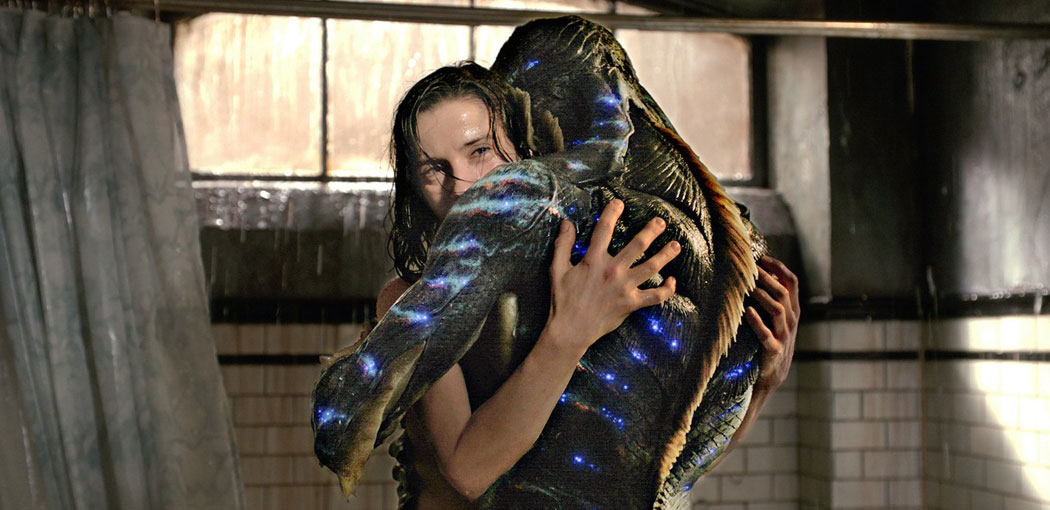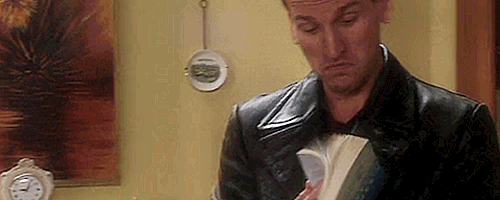The trailers for this, the latest film
by Guillermo del Toro, got a lot of his fans excited. For some, it
looked like a return to the universe of Hellboy,
featuring as it does an amphibious being with more than a passing
resemblance to Abe Sapien. For others, it was a return to the
aesthetically and emotionally strange worlds he had previously
explored in El laberinto del fauno (Pan's
Labyrinth) and El
espinazo del Diablo (The
Devil's Backbone), only this
time in an English language film. For del Toro, however, it was a
chance to finally make his own follow-up to The Creature
from the Black Lagoon.
Del
Toro was involved with Universal in early talks to direct a remake of
Creature, but he
insisted on a version of the film told largely from the Gill-man's
perspective and wanted to see the heroine succeed in her romance with
the monster. Universal weren't keen, and, well, you've seen the state
of the Universal monster-verse. Perhaps they should have listened.
This is the latest of many films that del Toro has made inspired by
wonders and horrors from his childhood. However, unlike El
laberinto and El
espinazo, this is not an
exploration of childhood fears but of adult concerns such as love,
sex, allegiance and ambition. It's also one of his best and most
beautiful films yet.
As
with previous del Toro's films, The Shape of Water stars
Doug Jones as its primary monster, following his roles as Abe in
Hellboy and Hellboy
II: The Golden Army, plus the
Chamberlain and the Angel of Death in the latter; the faun and the
Pale Man in El laberinto del fauno.
Although the physical similarity to Abe is obvious, Hellboy's right
hand fish is an especially verbose character. The Creature of The
Shape of Water, shackled,
wounded and mute, is more similar to the generally villainous
characters for which Jones has portrayed through movement only
(including the Pale Man, and the leader of the Gentlemen in Buffy
the Vampire Slayer). Both
visually and conceptually, the Creature here might be best described
as the missing link between the bestial but passionate Gill-man and
the cultured and magical Abe.
The
true star of the film, though, is of course Sally Hawkins, who has
rightfully been showered with praise for her performance as Elisa
Esposito, the similarly mute cleaning woman who lives a life of
subdued drudgery at the military facility in which the Creature is
contained. While she communicates through sign language – a mix of
ASL and BSL I am informed, and helpfully subtitled and/or interpreted
for those of us who do not sign – some of the most illustrative
moments in the film are without language whatsoever. Delicately
directed moments explore a life that is unique yet ordinary: furtive
masturbation during her morning bath, excitable moments of dance in
front of the television, calmly eating her packed lunch between
shifts. It's an achingly beautiful performance, with which Hawkins
portrays a character trapped by her difference from those around her
but surrounded by love, from her friends, neighbours and the
mysterious Creature in the tank.
Which
is not to say the rest of the cast are not given the chance to shine.
The brilliant and under-appreciated Richard Jenkins plays Giles,
Elisa's next-door neighbour and best friend, an ageing advertising
artist who struggles to live a closeted life during the crushingly
conservative America of 1962. Octavia Spencer is Zelda, Elisa's
workmate and her closest confidante in the daylight hours, who serves
as her voice in the workplace. While very different characters, they
are linked in their clear love for Elisa, and by the marginal place
they have in the society of the time. Indeed, it's a powerful
statement to have the two main voices in the film – save the
antagonist – be those of a gay man and a black woman.
That
antagonist is Michael Shannon's Colonel Strickland, a loathsome
creation and a pitch-perfect, pitch black portrayal of impotent
white-man ambition. Strickland's desperate need to prove himself
worthy to his superiors drives the film's plot, as he tortures the
Creature and plans to tear him apart in a desperate attempt to learn
something – anything – that he can present to his commanding
officer to use in the fight against those damn dirty commies. He's
thrown into sharp relief by his chief scientist Bob Hoffstetler –
aka Dimitri Mosenkov –
played with anguished heart by Michael Stuhlbarg. Again, making a
Soviet spy one of the most heroic and sympathetic characters marks
the film as a deliberate attack on the conservative right – a
direct counter-narrative to the usual heroic square-jawed American
point of view.
Indeed,
this is the core of the film. As much as the story is about the
plight of the outsider, the need to find someone to be alike and
with, it's clear that del Toro really desperately wanted to follow up
The Creature from the Black Lagoon (actually
veering off partway through the sequel, Revenge of the
Creature) by making it plainly
clear once-and-for-all that the Western interlopers are the villains.
Still, for all del Toro's sympathy for the original Gill-man, he was
an aggressive being who tried to abduct the object of his desires.
The Creature of Shape of the Water
is an idealised version, capable of violence and clearly a wild
animal, but far more intelligent, sensitive and compassionate.
Beautiful,
strange, lyrical and sensual, The Shape of the Water is
a remarkable film. Although the final twist is signposted clearly
from the beginning, it nonetheless makes for a just and satisfying
climax to a moving adventure.



